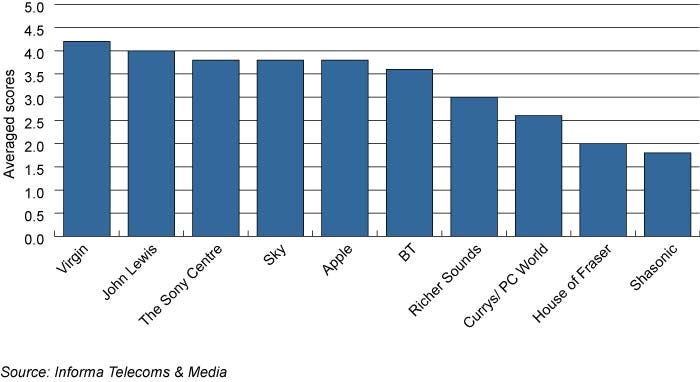UK high street fails to push Smart TVs to consumers
According to the latest research from Informa Telecoms & Media, awareness of Smart TVs remains low as UK retailers fail to educate consumers of their benefits and provide even the most basic information regarding connected-TV features. Informa estimates that 35 per cent of all TVs sold this year will be “smart”, however, this is a result of internet connectivity becoming a “default” technology in more and more TV sets as standard, rather than an increase in consumer demand.
December 30, 2011

By Andrew Ladbrook
According to the latest research from Informa Telecoms & Media, awareness of Smart TVs remains low as UK retailers fail to educate consumers of their benefits and provide even the most basic information regarding connected-TV features. Informa estimates that 35 per cent of all TVs sold this year will be “smart”, however, this is a result of internet connectivity becoming a “default” technology in more and more TV sets as standard, rather than an increase in consumer demand.
A “mystery shopper” survey conducted across the UK’s leading retail chains and pay-TV providers*, revealed that many retailers are ill-equipped to sell these products with the majority of stores having no internet connection, no dedicated in-store section and poorly trained sales staff.
While some specialist and mass-market retailers are providing an increasingly interactive shopping experience for smartphones and tablets, connected TVs are yet to be held in the same regard. Store displays and sales assistants tend to focus on TV screen size and quality when making their recommendations to consumers. It seems that Smart TV features are an afterthought, but with no internet connection in stores their advantages are quite literally not being seen or heard.
This research took place over the busy festive period and was conducted across the main providers of connected TVs including retail chains, specialist electronic stores and pay-TV providers for both a physical and online shopping experience. Each outlet was scored against several factors – range of products, staff expertise, technical knowledge, etc. – which provided an indication of the overall shopping experience. While the retail experience was generally negative, by contrast, manufacturers (e.g., Sony, Apple) proved extremely positive. They promote connected TVs as a highly desirable product, in a dedicated environment and they have more comprehensive websites, which offer links to retailers if not their own retail portals.
Amazon UK offers the closest thing to a comprehensive shopping experience for connected TVs (extensive FAQs, dedicated information pages) but navigation is far from perfect, and connected TVs can be lost amongst broader range of TVs jostling for consumers’ attention.
The situation differs greatly for pay TV, for which consumers are already strongly aware of what on-demand video services are available to them. The service providers (BT, Sky, Virgin) offer dedicated, well-promoted information across more integrated channels. In addition, detailed lifestyle questions ensure consumers are provided with the most suitable products and services – and are open to upselling opportunities.
Retailers have failed to grasp the opportunity that Smart TVs provide them. Now more than ever actually experiencing the user interface and the additional services provided on a TV before buying in a store is paramount. As long as this situation remains the status quo, pay-TV providers will continue to benefit and will be seen as the providers of on-demand and catch-up services to the TV.
*This research was conducted across the leading high street retailers ( John Lewis, House of Fraser ,Currys/PC World, The Sony Centre, Shasonic, Apple and Richer Sounds) and pay-TV providers (BT, Sky and Virgin Media). The customer scenario was to purchase a new TV that connects to the Internet, with a screen size of 32” – 40” with a budget of £400 – 600.
Fig. : Mystery Shopper scorecard, averaged scores

About Informa Telecoms & Media
Informa Telecoms & Media
Read more about:
DiscussionYou May Also Like










_1.jpg?width=300&auto=webp&quality=80&disable=upscale)
